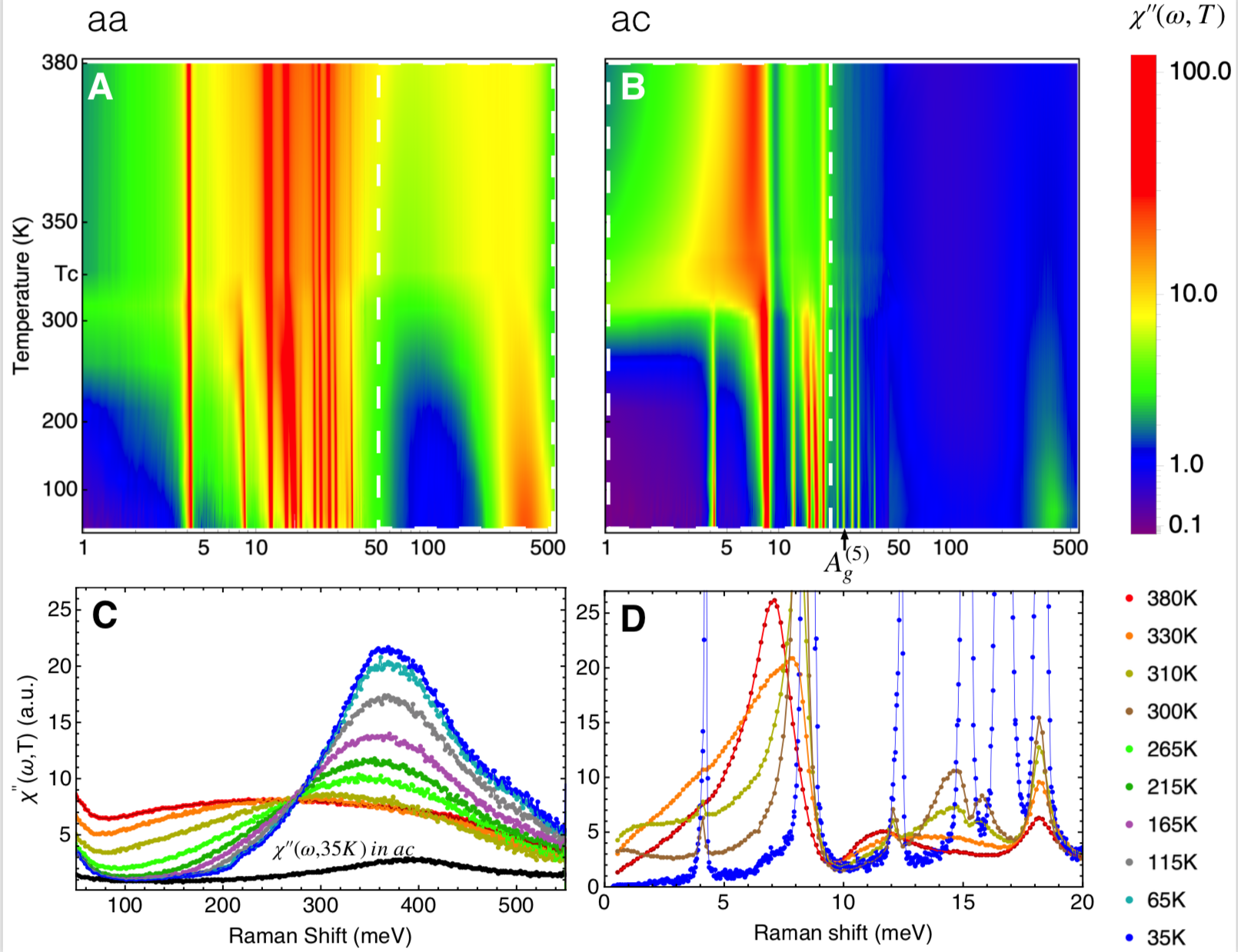Pavel A. Volkov, Mai Ye, Himanshu Lohani, Irena Feldman, Amit Kanigel, Kristjan Haule, Girsh Blumberg

(A) and (B): Raman response χ”aa and χ”ac in the aa and ac scattering geometries, respectively. (C) and (D): χ”aa and χ”ac in the range enclosed by the dashed white boxes in (A) and (B) on a linear frequency scale.
Attraction between electrons in metals drives superconductivity – an example of a macroscopic coherent state. In semiconductors, electrons and holes may sustain macroscopic coherence due to Coulomb attraction in another state – the excitonic insulator. With only a few candidate materials known, many of its features can be obscured by structural effects, making the excitonic insulator state challenging to identify. Using polarization-resolved Raman spectroscopy, we reveal critical softening of an excitonic collective mode driving the transition in Ta2NiSe5, and coherent superposition of band states at the gap edge, analogous to coherence factors in a superconductor. The temperature evolution of the spectra reveals departures from mean-field theory predictions, pointing to a unified view of Ta2NiSe5 as a strongly correlated exciton insulator.